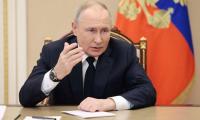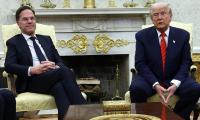The US gave Huawei, the privately-owned Chinese telecom giant, a 90-day reprieve on the ban against buying US technology; simultaneously allowing US companies to export to Huawei without restrictions.
This truce is temporary yet encouraging in the tumultuous spate of the US-China trade war that shows no sign of abating with tit-for-tat tariffs imposed on each others’ products. The relaxation of the ban for a limited time period was announced in the aftermath of the G-20 summit at Osaka in June, where Chinese President Xi Jinping and US President Donald Trump, two strategic rivals, met face to face to solve crucial issues of the escalating trade war.
The US placed Huawei on the export blacklist in May this year and banned it from selling its products to the US. Alternately, US domestic companies were prevented from selling technology and components to Huawei without a licence from the US Commerce Department. The ban was part of a sweeping effort by Trump to restrict Huawei on grounds of threat to US national security. The Chinese company had been indicted for stealing trade secrets, indulging in secret surveillance and violating US sanctions against Iran. Washington fears that Chinese intelligence services will use Huawei to spy on host countries, and combating that threat is part of its broader strategic tussle with China. Huawei has however denied such allegations.
It is important to evaluate the reasons for Trump’s softening stance on Huawei when the tariff war is at its peak. Was it a measure of rapprochement, conciliation, bucking in, or a kind of trade deal that prompted the relaxation of technology ban? A closer look reveals that Trumps’ anti-China trade offensive has had less to do with reducing trade deficit with China and more about protecting US technology. The failure of the US’s strategic objective of protecting its technology transfer to China and exposing the vulnerability of Huawei, in the bigger game of hurting Chinese economic interests, could not materialize. It backfired and the ban had to be relaxed for a while.
When the Trump administration attempted to bust the air out of Huawei’s sails, it did not evaluate how well the Chinese tech company would control the damage inflicted on it. It neither whimpered nor writhed in pain. Alternatively, it refuted its vulnerability to US interference and threat by steady resilience.
So when it was virtually shut down in the US, Huawei managed to turn to third countries to offset the impact of US export blacklisting. It led the race by winning almost 50 contracts of 5G network, the next generation of superpower connectivity, around the world including 140 countries from Africa, Asia and South America. China was able to maintain global market share for its smart phones this year compared with the declining sales of Apple. This suggests that the trade war was not successful in cramping the Chinese company whose products remained popular across the world despite the ban by Trump. Security fears may have weakened its presence in Trumps’ America but strengthened Huawei’s clout in the global market.
Huawei remained buoyant in the face of the ban and committed to investing billions of dollars on research and development to boost its domestic capability in chip making and technology, reducing its reliance on US microchip technology. Its phones are making use of chips designed by HiSilicon, its in-house chip designer unit. This suggests that the ban helped accelerate Chinese self-sufficiency – an obvious upset for the US.
The US failed to dent Huawei’s profits, contrary to its expectations, as they grew undaunted. Its sales actually increased 23 percent in the first half of the current year registering a profit of $58.3 billion in 2019, despite being blocked from buying components from US suppliers.
Globally, the US failed to persuade its allies to ban Huawei in their countries because their economies depend on trade with China. Global supply chains will be badly disrupted if a blanket ban takes effect. Therefore, European countries will continue to allow Huawei to build 5G networks under increased surveillance and security checks, sparking anger in Washington that finds it exceedingly difficult to cooperate with countries that use Huawei technology.
Domestically, US microchip makers like Qualcomm, Intel, and Micron have felt the heat of the export ban. Fidgety and worried about their dipping business sales, they were at the forefront of lobbying for and reviving the technology trade with China.
Analyzing the developments of the tech war and identifying it as a core problem in US-China relations, Henry Paulson, a former secretary to the US treasury commented in the ‘Financial Times’ that “Balkanizing technology could harm global innovation, hurting the competitiveness of not just Chinese firms but also of US companies around the world.” It will undermine US innovation and technological progress if it is closed from other innovative economies and people.
Banning Huawei was aimed to wring concessions from China on grounds of security threats but it proved to be short-lived. With no significant concessions gained, it only bolstered local Chinese support for Huawei, enabled its massive global sales, and accelerated its tech self-sufficiency. At the same time, pressure from the tech and business industry prompted the US to relax the export ban, for a while, to prevent further jitters to its slowing economy.
Surely, putting up an economic iron curtain is not the solution to trade friction.
The writer holds an LLM degree ininternational economic law from the University of Warwick.
Email: beelam_ramzan@yahoo.com
People of that time believed that an eclipse was a symbol of displeasure of gods
Vertically speaking, dominance of domestic debt in Pakistan’s debt portfolio is haunting
Loss of biodiversity is stark reminder that urban mismanagement is not just infrastructural failure but ecological...
Strong public warning systems can also help ensure quick evacuations in places prone to fires
PPPs in Pakistan's WASH sector face significant regulatory and policy challenges that hinder their effectiveness
Instead, it would have powerful chairman with three-year term, appointed at prime minister’s discretion







